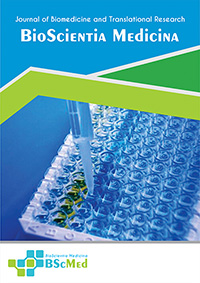Main Article Content
Abstract
Background: Pulmonary tuberculosis (TB) and bacterial pneumonia are respiratory infections with high morbidity and mortality rates. Despite having similar clinical symptoms and radiological findings, these conditions require different treatment approaches. Procalcitonin is a potential biomarker to differentiate these conditions, as its levels tend to increase in bacterial infections but not in TB. This study aims to compare procalcitonin levels in patients with pulmonary TB and bacterial pneumonia.
Methods: This research employed an observational analytic design with a cross-sectional approach conducted at Dr. Mohammad Hoesin General Hospital (RSMH), Palembang. The study subjects were patients with pulmonary TB and bacterial pneumonia who met the inclusion and exclusion criteria. Procalcitonin levels were measured using ELISA methods. Data were analyzed to determine differences in procalcitonin levels between the two groups.
Results: The study found that procalcitonin levels in bacterial pneumonia patients were significantly higher than those in pulmonary TB patients (p<0.05). These findings indicate that procalcitonin levels can serve as a diagnostic parameter to distinguish between the two conditions.
Conclusion: Procalcitonin levels can be a useful biomarker for differentiating pulmonary TB from bacterial pneumonia. This biomarker is expected to assist clinicians in making more accurate diagnoses and expediting clinical decision-making.
Keywords
Article Details
As our aim is to disseminate original research article, hence the publishing right is a necessary one. The publishing right is needed in order to reach the agreement between the author and publisher. As the journal is fully open access, the authors will sign an exclusive license agreement.
The authors have the right to:
- Share their article in the same ways permitted to third parties under the relevant user license.
- Retain copyright, patent, trademark and other intellectual property rights including research data.
- Proper attribution and credit for the published work.
For the open access article, the publisher is granted to the following right.
- The non-exclusive right to publish the article and grant right to others.
- For the published article, the publisher applied for the Creative Commons Attribution-NonCommercial-ShareAlike 4.0 International License.





